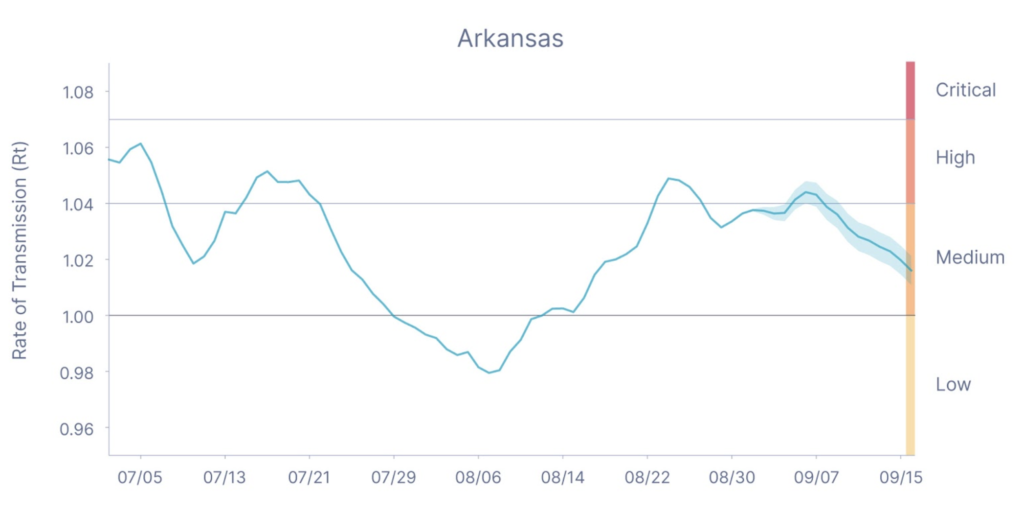With COVID-19 data from this week showing record case numbers and hospitalizations, Kinsa’s data show no signs of things getting better. 15 states are signalling imminent increases in our early-warning system, including the already hard-hit states of Texas, Missouri and West Virginia.
With the cold and flu season on the horizon – and COVID-19 cases holding steady at a very high baseline – this trend is concerning. In Arkansas, where Kinsa’s Rt metric has been moderately elevated for several weeks, confirmed COVID cases are now beginning to rise. In neighboring Missouri, Greene County has also seen high illness transmission in recent weeks.
At a national level, Kinsa’s measure of illness transmission (Rt) is near 1, suggesting that COVID-19 case growth will remain relatively stable over the next few weeks. The current baseline of 40,000 new infections per day represents a dangerously high status quo as we head into the fall, when many experts fear that the start of the school year and colder weather will fuel case growth.
There are some regions with modestly elevated illness transmission – Southern California, for example – but no states are showing alarmingly high rates of illness spread. At a national level, Rt has leveled off around 1 for the past few weeks, suggesting that we will not see major changes in case numbers in the coming weeks.
The past few weeks have brought some optimism as daily COVID-19 case counts have trended downward at a national level. However, regional trends in Kinsa data show that illness transmission (Rt) is rising again in many parts of the country — particularly in the southeast and central Plains regions — suggesting that this downward trend in new infections may plateau or even reverse in the coming weeks.
The start of summer brought with it a renewed surge in coronavirus cases, with daily new case counts climbing to a mid-July peak that was twice as bad as the initial spring wave. However, the latest national data shows a slight deceleration in cases over the past week. But is this just a temporary reprieve — or perhaps the result of reporting issues?
Kinsa’s data show that illness transmission accelerated in many states over the past few weeks, and this trend is now translating into growing COVID-19 cases in states like Louisiana, South Carolina and Tennessee. But two of the states that are on our watchlist – Pennsylvania and Michigan – have not yet seen significant growth in cases. Our data suggest that may be about to change.
A disease’s effective reproductive number, Rt, is a critical metric used to understand whether an illness outbreak is under control. Using Kinsa’s fever data, we derive a real-time Rt indicator for disease spread in an area that historically follows the expected patterns for seasonal influenza.














